After many years of waiting, Cyan’s latest game is here. They created the legendary Myst franchise, with Myst itself being the best selling PC game for the better part of a decade. Times have sinced changed, and games such as these are unfortunately known only to a small minority of gamers.
Obduction is an Unreal Engine 4 based, partially crowdfunded first-person puzzle-adventure indie game, just like the Myst franchise. Myst was one of the most important, innovative games in the history of gaming; the first of its kind bringing forward groundbreaking visuals combined with unthinkable environmental design. It may have been the first video game to deliberately make the argument that video games are an art form. Obduction brings forward many questions, such as what has Cyan done differently? How have they changed over the years? Will it continue to innovate and blow our minds with pure visual bliss? Let us find out!
Closer Look
Obduction is available exclusively on Windows and OS X. It is one of many sub-genres unique to computer gaming. As with its spiritual predecessors, it doesn’t have a whole lot in the way of configuration; a good amount of graphics and sound options plus raw input like a proper PC game. You can even choose a gender defined player shadow. But much to my surprise no key rebinding. I still cannot explain why no key rebinding exists in Obduction; while it is true that Obduction only uses movement keys (WASD and left shift for sprinting), a key to change between locked and unlocked cursor modes (C), spacebar for taking photos, mouse movement, and left mouse click for interaction, rebinding is still a necessary feature.
Locked cursor mode centers the cursor and prevents it from being moved, so that mouse movement instead moves the whole screen like a regular game. Unlocked cursor mode changes this so that mouse movement moves the cursor around the screen, like a point-and-click game.
As with realMyst: Masterpiece Edition, the player can choose between free roam and point-and-click gameplay. They include this and other nice options, but no key rebinding? Quite the Mystery. I doubt one person on the planet prefers point-and-click, not that its inclusion is a bad thing. It is there to pay homage to Myst.
Manual saving is not exactly included with Obduction. It has multiple save slots for different playthroughs, but the game auto saves all the time, overwriting the previous one in the process. Pausing the game causes it to save. This works well for this kind of game, you’ll never lose progress this way.
Cyan really makes it a point to install Obduction onto an SSD (RAMdisk would be even better). This is because of the way it handles loading terrains and such; it does so in a unique, very seamless way. Better yet, if you have enough RAM to make a RAMdisk that could fit this game, do it! I wish I had such quantities of RAM. Considering the fact Obduction is roughly 14GB, 32GB RAM should be considered a minimum (as it isn’t wise to mix RAM anyway).
But enough of that. Let us get to the good stuff. Whereas Myst’s metaphor lies in the concept of using books to link to other worlds, Obduction has a different one; using the power of seeds, belonging to special trees, to teleport to other worlds. Obduction provides far more exposition to how this works than Myst ever does, and the philosophy behind it all in Obduction is intriguing. The ideas trace their roots (pun intended) to traditional biological studies of trees, namely the methods used by angiosperms to reproduce (letting the wind, insects, and other beings scatter their seeds across the world). We don’t want to spoil the game or say more than necessary however, but Obduction’s story is more complex than most will expect. Not complex in the same way that Neverwinter Nights 2: Mask of the Betrayer is, but more so than Myst. With Obduction and Cyan’s other games, the writers seem to play God in how they write and create these worlds, and with Obduction we see they haven’t lost their touch.
As with Myst but to an even greater extent, Obduction relies on well written technobabble to provide logic and interesting material to the plot. This includes but is not limited to the mechanics behind unique, otherworldly technology and machinery, and a mathematical alien number system used in puzzles. But let us backtrack a little bit: You play as an unnamed silent protagonist, with no model but the ability to choose a male or female shadow. No first person mesh either. The game starts off with a voiced narration of a once in a lifetime experience that you, the player, are now experiencing at the start of the game. I was hooked immediately. It starts off so mysterious, like its spiritual predecessors.
Based on what is said at the very beginning of the game, people are rescued by these seeds which transport them to a new world. The protagonist is one such person although it is never made clear what he/she is being rescued from, if anything.
You are transported to Hunrath, an arid desert world seemingly within some kind of dome bordering a very alien world. An introductory hologram is impossible to miss, with instructions telling you to go meet someone at a house to get acquainted. The house is empty. Other introductory holograms tell you about Hunrath’s thriving community, which is nowhere to be found. One tells you about the waterfall that is vital to the community’s survival, but the waterfall is dry and not flowing. The place is a ghost town. Needless to say, something is very wrong here.
Hunrath is a very large, non-linear yet not totally sandbox hub. It is the new Myst Island so to speak. Both floored me, left me in awe. Mesmerizing level design combining familiar with unfamiliar. Many places are at first inaccessible but become accessible later on, although not usually on their own. Think of it as environmental puzzles, so to speak. Nonetheless you are free to explore at your leisure in Obduction, and the more you play the more you can explore. Shortcuts around Hunrath will be discovered too.
One character can be found in Hunrath, a man named Cecil generally referred to as C.W. His actor model, like the holograms, is a live action recording of a real person. Myst was like this for obvious technological reasons, being a 1993 game. It’s a bit strange to see Obduction take on this style, but it is a deliberate style choice that distinguishes Cyan games.
Obduction makes it a point to never hold the player’s hand, as did the Myst games. C.W. even says, “no time for hand holding.” Cyan was clearly speaking to the player here. But this is taken to rather unrealistic lengths within the plot; there is no plausible reason for C.W. to withhold that much information from you, to be as vague has he is. He is this way to make the game more challenging yes, but at the cost of logical storytelling. Nonetheless, it’s not entirely illogical as the earlier tasks he gives you are quite simple and obvious. Get the power running. C.W. is very busy, this is the game’s excuse for him not helping you but it is somewhat overplayed.
So while Obduction doesn’t hold your hand, it does at least point you in a direction a little bit more than Myst does, as C.W. gives you vague tasks with zero guidance. “Get them power lines hummin.'” “Connect them trees.” Either way, this game, like the Myst games, force the player to figure things out on his/her own more than perhaps any other.
Comparing my first playthroughs of Obduction and Myst, I found Obduction to be easier, but I now realize that is because Myst was my introduction to this sort of puzzle game. Objectively, Myst is more straightforward and less abstract. Of course, Myst is also tiny compared to Obduction and many hours shorter. The puzzles are also different in design; in Myst and most other puzzle games, most puzzles are rather isolated and solved on the spot. Not Obduction. The puzzles here are entirely environmental, and involve overcoming environmental, physical obstacles in some way, shape, or form. They involve traveling and some back and forth moving around, even if said backtracking actually involves different paths and shortcuts (to avoid repetition). They entail altering the environment on a pretty large scale, keeping it from becoming too static or repetitive. The intricate object interaction of Myst doesn’t materialize in Obduction, it is simpler but the logic behind it is sometimes more complex. In Obduction, it isn’t always clear what you have to do.
Some of the puzzles benefit from using the built-in camera feature. Pressing spacebar takes a photo, which you can refer back to in the pause menu.
Obdution’s puzzle design is a nice change. It ties its gameplay (puzzles) and its environments together very well. The puzzles aren’t very “gamey” and are more realistic, representative of tasks you could be doing in real life… albeit with some alien technology thrown in. It does retain some synthetic limitation like Myst did; some inaccessible areas would be easy to access in real life; sure, they might involve dropping down a small ledge or climbing (the game has no such movement as mentioned earlier), but here we have to solve some complex environmental puzzle to get there. The levels and puzzles should be designed to avoid this. Most do avoid these synthetic limitations at least, just not all. It also has invisible walls to prevent the player from dropping down off of ledges and the like, a concept I do not particularly agree with. Let the player fall to his/her death.
Hunrath is a hub. There are three other worlds to travel to; Kaptar, Maray, and Soria aka Mofang. While you can enter Kaptar and Maray in whichever order you want, fully exploring Maray mandates doing some things in Kaptar. Entering Soria isn’t possible (to my knowledge) without exploring much of Maray, which again requires doing some things in Kaptar. Obduction isn’t fully sandbox, neither is Myst the first time through unless you cheat or correctly guess a specific puzzle.
Obduction has less worlds than Myst, yet is far larger. Hunrath, Kaptar, and Maray are all massive and filled with unique environmental puzzles. Soria, the alien world bordering Hunrath, has no puzzles and is tiny for some reason. No need to spend more than 5 minutes there. It seems Soria might have been rushed. I would have preferred it had hours of content like the others, which would bring the total game length from 20 hours to well beyond that, at least for many of us. Play time varies substantially in non-linear puzzle games after all.
Still, every world is mesmerizing. They all stopped me in my tracks. I wandered around slowly in awe, like a child in Disney World. I have played so many games across so many platforms for the better part of two decades, and I must say that Obduction is the most jaw-dropping game I have ever played. This is entirely due to the enviroments and how they are used. Many felt the same way about Myst, I felt the same way about realMyst: Masterpiece Edition but to a lesser extent. Nobody can play Obduction and go on to claim that video games cannot be art.
Obduction is a modern day pioneer. It doesn’t do things anyone would have thought is impossible, but it does things unimaginable. The amount of creativity and originality it takes to make a game like Myst or Obduction is hard to fathom. This world in Obduction isn’t only the most visually stunning game world I have come across, but thanks to the way puzzles alter it, it is not overly static and has incredible environmental interaction.
Imagine coming across somewhat recognizable machinery on a scale never before seen, discovering that it’s even bigger than it appears, and then turning on this machine and watching it transform the world around you. Words cannot describe it. I am taking measures to not spoil the experience for anyone either, as games such as Obduction and Myst are infinitely more potent on a first playthrough, when you have absolutely no idea what you are getting into.
The puzzles in Kaptar and Maray are not isolated or separated from Hunrath either. They affect each other, changing the terrain and accessibility, thus this is where some of the difficulty comes into play. The puzzles are not very hard but are entirely logical. Everything you interact with isn’t necessarily a puzzle either. It has miscellaneous object interaction, with some of these objects being backer rewards while others are just there for authenticity.
While Myst has you linking to other worlds through books, Obduction has a different method. It is more visually enticing, more seamless, and is the main reason an SSD or RAMdisk is a benefit for Obduction.
Exploring all of these worlds, interacting with familiar objects like written documents and unfamiliar objects, will all provide exposition. What happened to these worlds? Why are they all so devoid of life? Although not entirely devoid, other kinds of creatures are encountered. Like Myst but to a far greater extent, Obduction’s story involves alien creatures, and these are actually encountered even if not very often. C.W. is the only person you have “dialogue” with, although because the protagonist is silent it isn’t really two-way.
Due to how diverse the environments and puzzles are, and the opening up of shortcuts in the environment, excess repetition is generally avoided. The exceptions to this are the two maze puzzles in Maray, one more than the other. These puzzles aren’t as bad as some make them out to be, just pay strict attention right off the bat. Understand exactly what you’re doing, the logic behind these puzzles is very simple. One thing I missed was a small button within the mines of Hunrath vital to completing the infamous maze puzzle. I didn’t explore enough, and paid for it.
So in a nutshell, Obduction involves non-linear but not totally sandbox hub-based exploration with essentially no guidance, clues, hand holding. No quest log or the like. No HUD beyond a cursor that disappears when moving, although I wish “cursor locked” mode (locks the cursor in the center of your screen like a normal game) was instead changed to “no cursor” mode. I don’t want a cursor in my screenshots. Gameplay involves solving practical, but often weird and alien puzzles which all involve altering the environment on a large scale. Every puzzle is completely logical and overall I consider every single one to be easy, but still fun and rewarding. Puzzles involve lots of exploration and traveling. You are given much, but not complete freedom in the order you advance the game.
Storytelling relies heavily on the environment in various ways. Set decoration and design give insight to events and character personalities. The story is also told through written documents of various kinds, which aren’t written in such a way to directly spell out what happened. Live action recordings hidden in holograms also serve to deliver exposition.
It is a fairly simple game, all things considered. No complex gameplay systems to be found here, unvoiced protagonist. Explore, interact, and solve. The story is thought-provoking even if not on the grandest scale, and the plot really encourages following a flow of logic to understand how the teleporting works, what happened to these worlds, and how it will end. Three endings are present, two of which being the direct result of… doing something near the end of the game (either doing it or not doing it). Another ending is premature but well placed.
Diverse level design and (usually) diverse puzzles keep things interesting throughout. Puzzle solving only requires movement and using left mouse click, as far as input goes (although you may also take photos), so gameplay really lies in the puzzle design itself which is entirely logical and almost all are fun and rewarding, even if not particularly difficult. The maze puzzle in Maray could have been executed in a less tedious manner however, or even outright replaced by a more difficult but less tedious puzzle. Had this maze been improved or replaced by something better, had those few synthetic limitations in level design been averted, and if Soria/Mofang had as much content as the other worlds, I would have zero complaints about this game.
So, all things considered, Obduction is fantastic. It has some of the most spectacular, jaw-dropping environments in video game history, and uses this environment well (for the most part) for gameplay and storytelling.
Average play time seems to be about 20 hours for most gamers, myself included.
Audio & Visuals
 Obduction was built on Unreal Engine 4, DX11 graphics API and XAudio2 audio API. It is as beautiful as a UE4 game should be; as far as technical graphics fidelity goes it is one of the absolute best overall, the best in some ways such as materials processing, shadows, post-processing, and maybe lighting at least in some ways. View distance is overall excellent although there is some object pop-in.
Obduction was built on Unreal Engine 4, DX11 graphics API and XAudio2 audio API. It is as beautiful as a UE4 game should be; as far as technical graphics fidelity goes it is one of the absolute best overall, the best in some ways such as materials processing, shadows, post-processing, and maybe lighting at least in some ways. View distance is overall excellent although there is some object pop-in.
Texture quality is very good too although not the best, and ample amounts of 3D mapping techniques are used to add to the realism. The temporal anti-aliasing is as good as it gets for modern games, barring supersampling. The weakest link here is model quality, in reference to polygons and perhaps tessellation. It is good overall, some but not all are outstanding but many are handily bested by Star Wars: Battlefront. Even so, any deficiencies in this regard are only noticeable up close. Models not being of the highest quality is expected from a low budget indie game, although it makes me wish they used some photogrammetry like The Astronauts did with The Vanishing of Ethan Carter.
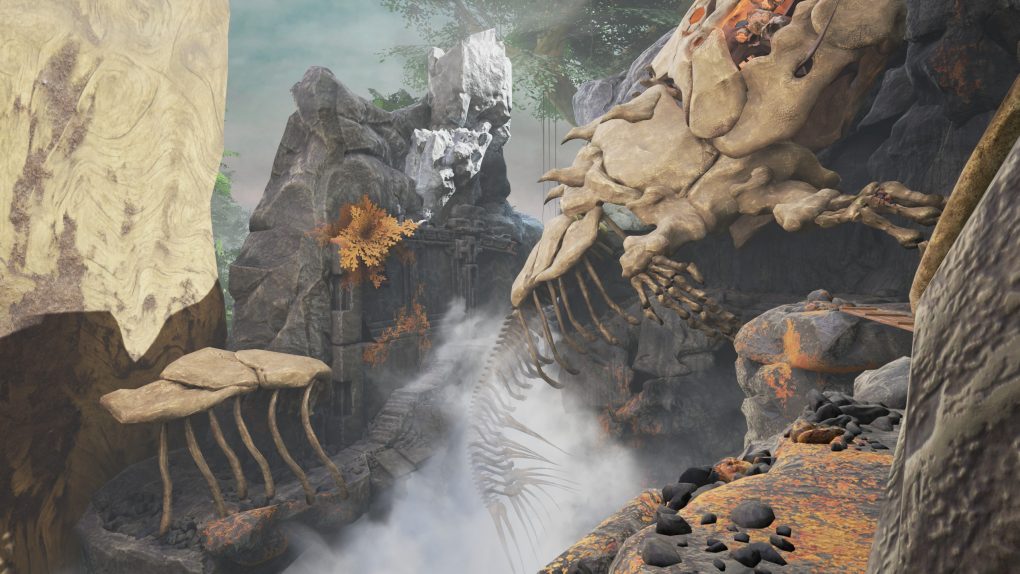 So Obduction is a technical powerhouse, with outstanding optimization on top of that. I average 90-115 FPS at 2560 x 1440 with an Intel Core i7 6700k @ 4.6 GHz, 16GB DDR4 3000, and a GTX 1080 which typically boosts to 2050 – 2063 MHz in this game. Obduction and UE4 in general do favor NVIDIA graphics cards though.
So Obduction is a technical powerhouse, with outstanding optimization on top of that. I average 90-115 FPS at 2560 x 1440 with an Intel Core i7 6700k @ 4.6 GHz, 16GB DDR4 3000, and a GTX 1080 which typically boosts to 2050 – 2063 MHz in this game. Obduction and UE4 in general do favor NVIDIA graphics cards though.
But how about the art design, more importantly? We briefly touched on this on the previous cage. It does not aim for photorealism. The lighting in Hunrath is clearly somewhat otherworldly, having a purple tint and being perhaps stronger than our sun. Maray looks more like an Earthly jungle save for much of the unnatural architecture. Kaptar has familiar lighting but is seemingly in the clouds and has strange, massive stone architecture (somewhat reminiscent of D’ni) and more, so it is more unfamiliar than familiar. Soria is almost completely alien.
Every level has a distinct artistic design and look, with a different color palette on each. They are all completely different from one another, and again, all are enthralling. It is one thing to have incredible art design but mediocre fidelity, as is the case with realMyst: Masterpiece Edition. It is another to have the opposite, like Star Wars: Battlefront (excusable given it’s just a multiplayer shooter). But Obduction being world class in both areas is a real treat!
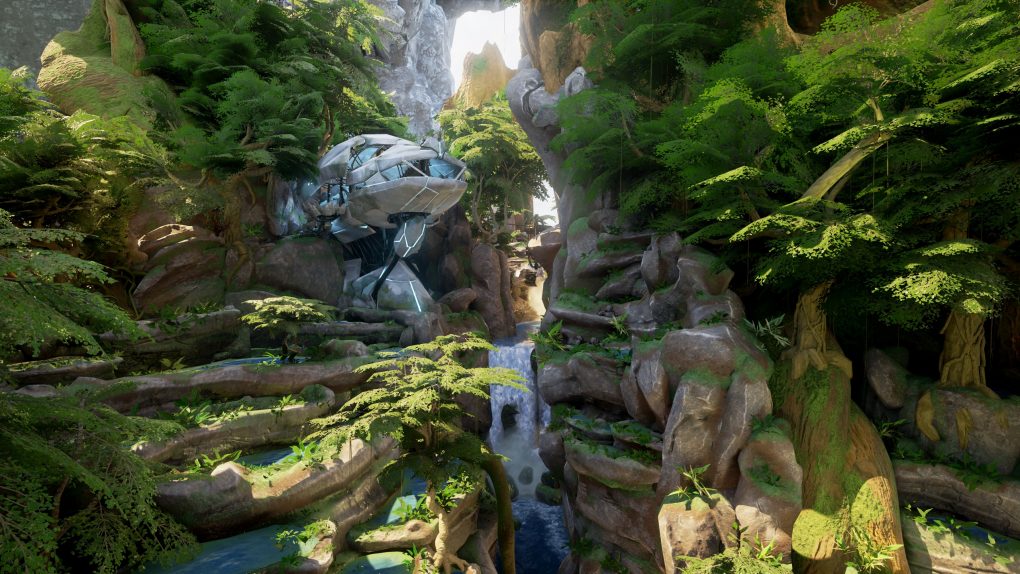 Obduction has native surround sound support; I can only confirm up to 5.1 due to my own limitations, and it uses all channels very well. Sound processing is certainly above average, and sound effects are phenomenal. So much detail went into the sound effects, and every world has a vast array of unique sounds, making use of all of my speaker channels very well. It avoids sounding static, sounds don’t only come from in front of you. It is always disappointing to play a game in which the only sounds either come from the player or are ambient sounds not having any positional origin; in this case the game ends up being stereo only, even in surround mode, and it sounds lifeless compared to a game with proper sound. Obduction makes sure to immerse players with both its visuals and sound in equal measure.
Obduction has native surround sound support; I can only confirm up to 5.1 due to my own limitations, and it uses all channels very well. Sound processing is certainly above average, and sound effects are phenomenal. So much detail went into the sound effects, and every world has a vast array of unique sounds, making use of all of my speaker channels very well. It avoids sounding static, sounds don’t only come from in front of you. It is always disappointing to play a game in which the only sounds either come from the player or are ambient sounds not having any positional origin; in this case the game ends up being stereo only, even in surround mode, and it sounds lifeless compared to a game with proper sound. Obduction makes sure to immerse players with both its visuals and sound in equal measure.
OpenAL would have been a preferable sound API of course, due to more potential effects and better processing, and because it is open source and moddable.
The voice acting is good, and more prevalent than Myst as there are more characters. We also get the return of Robyn Miller playing a character, with a totally different (southern) accent this time. One character’s broken English is amusing but played well.
What is award worthy is Robyn Miller’s soundtrack. Myst has one of the best soundtracks in gaming, and Obduction seeks to enter the same territory. While it generally has less music playing than Myst, the soundtrack is equally impressive and occasionally similar with its distinct use of percussion.
| 64-bit | Yes |
|---|---|
| Linux Support | No |
| Graphics API | DirectX 11 |
| Frame Rate | Unlocked |
| High Resolution Support | Yes |
| Ultrawide Support | Yes |
| High Refresh Rate Support | Yes |
| Borderless Windowed Support | Yes |
| VR | Yes |
| Display HDR | No |
| Ray Tracing | No |
| Multicore CPU Support | 4-8 cores |
| Adjustable FOV | Yes |
| Anisotropic Filtering | 16x |
| Anti-Aliasing | TAA |
| Upscaling | None |
| Sound API | XAudio2 |
| Sound | Up to 7 channels |
| Dolby Atmos | No |
| UI Scaling | Yes |
| “Analog” Keyboard Support | Yes |
| Debug Console | Tweaking required |
| Modding | No |
Conclusion
Ironically, puzzle games are often trickier to review than others. Obduction is as simple as it gets mechanically, as the only user input is basic movement, left mouse click for interaction, and pressing spacebar to take photos (entirely optional). Puzzle design is excellent for the most part, more complex than Myst’s. There is one glaring exception to the excellent puzzle design though, the infamous Maray maze which isn’t as bad as some make it out to be, but it is tedious.
Interestingly enough, I have noticed lots of user reviews that are negative due to the game’s puzzles being too difficult for them. I consider this to be an easy puzzle game. This is not a good sign for the future of Cyan games but it’s not surprising; after Riven, they have always been extremely niche. The legend of Myst lives on, its reputation as a confusing and challenging puzzle game will never die. Obduction is not on the same level of puzzle abstraction and difficulty so I am surprised at these negative reviews, but they are something to keep in mind – it is possible these puzzles might be too abstract for your taste. Many of the puzzles entail figuring out how to use some weird technology, but most of it isn’t that alien (more recognizable than Myst’s) and it’s mostly quite straightforward if you are able to step back and look at the bigger picture.
Visually, Obduction is the most breathtaking game I have ever played. Its magnificent, unique environments do not just exist on their own either; they are used strongly in storytelling and gameplay and vice versa.
Games such as Obduction are so much better the first time around. Venturing into the unknown and solving puzzles with no prior knowledge on how to do so is what puzzle adventure games are all about.
Strengths
- Breathtaking world and art design. You travel between completely unique, alien worlds. Few game studios have the art design prowess of Cyan, nice to see they haven’t lost their touch. Fans of games like Outer Wilds, No Man’s Sky, Subnautica should play the Cyan library in VR.
- Interesting narrative and storytelling, typical Cyan Worlds here
- Good puzzle design that entails altering the world, sometimes on an impressively large scale. Much less abstract than Myst series puzzles (not that this is a strength, just a point of clarity).
- VR support added post-release!
- Pretty good optimization, it is a gorgeous Unreal Engine 4 game that’s easy to run
- Very good sound quality
- Great soundtrack
- Quality voice acting
Weaknesses
- VR implementation isn’t perfect – some issues with controls, but mostly minor. VR is still the best way to play, though this is one of the heavier VR games in terms of system requirements since unlike most native VR games, it has 2016 graphics opposed to 2002 graphics quality.
- One specific puzzle annoyed a lot of players – the Maray maze


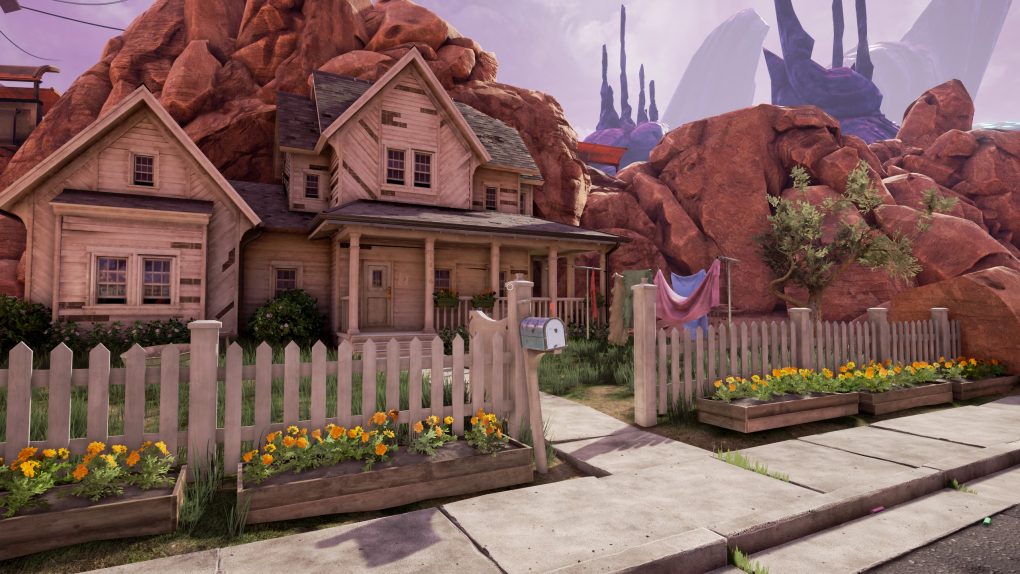

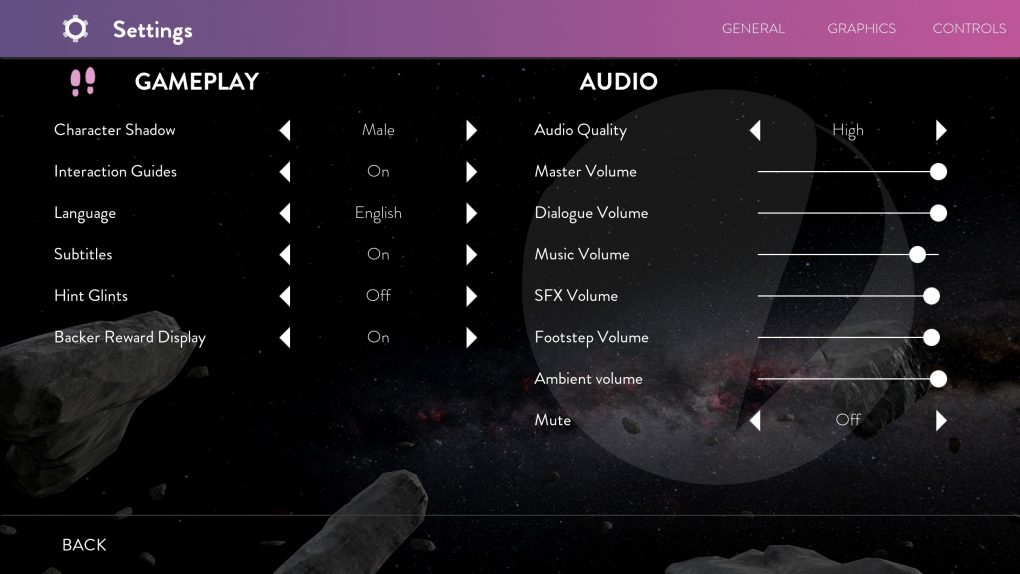
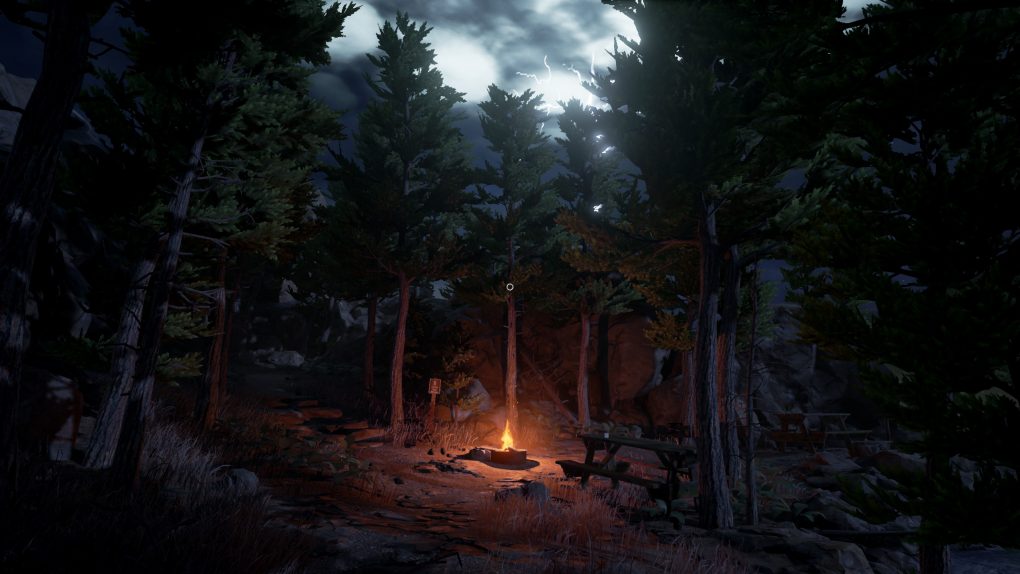

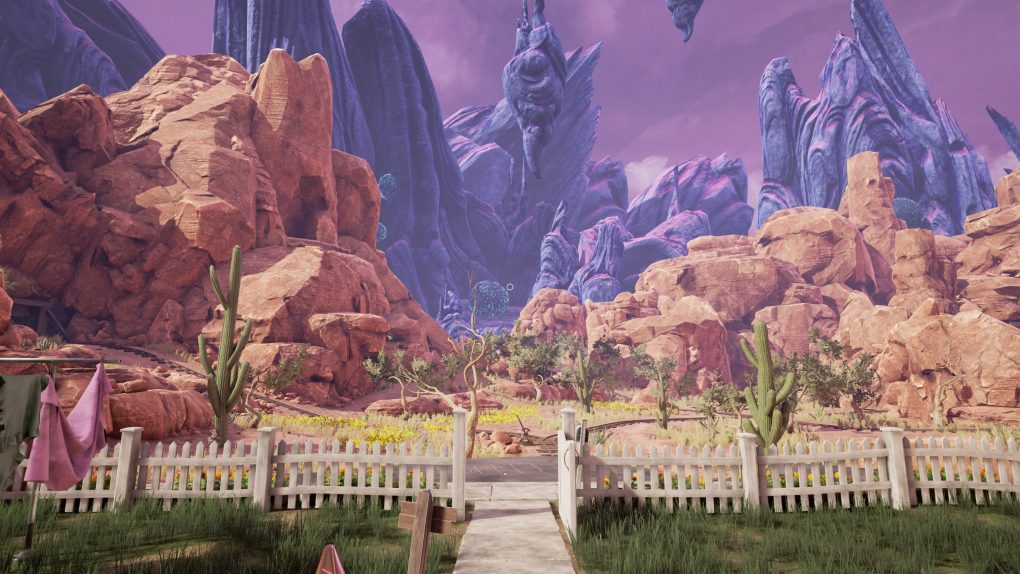
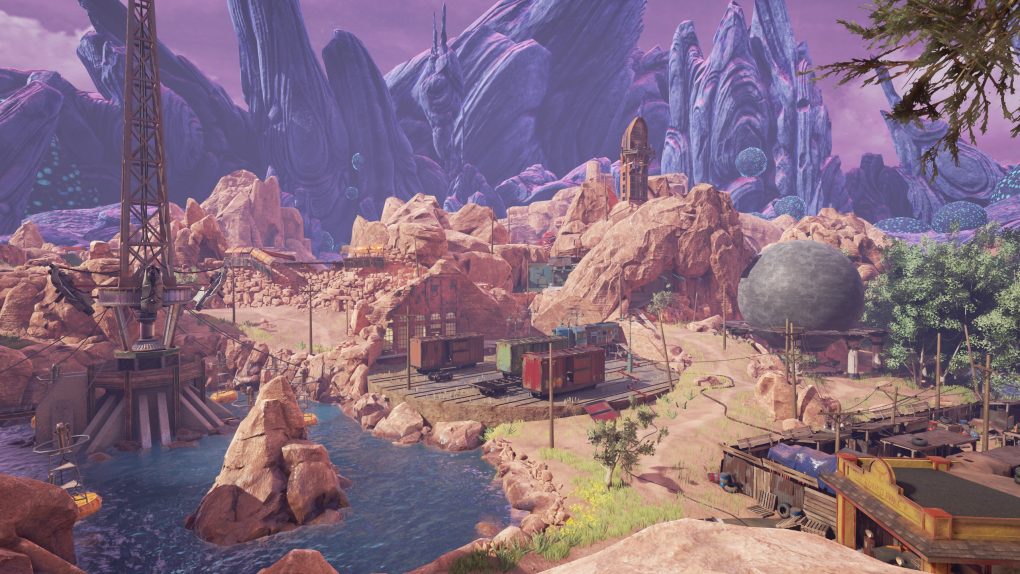
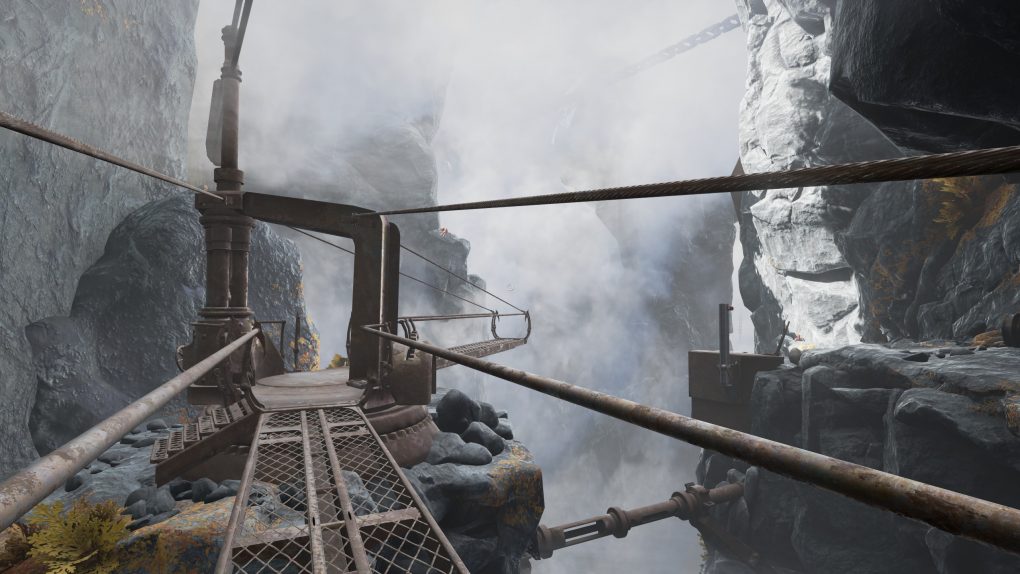
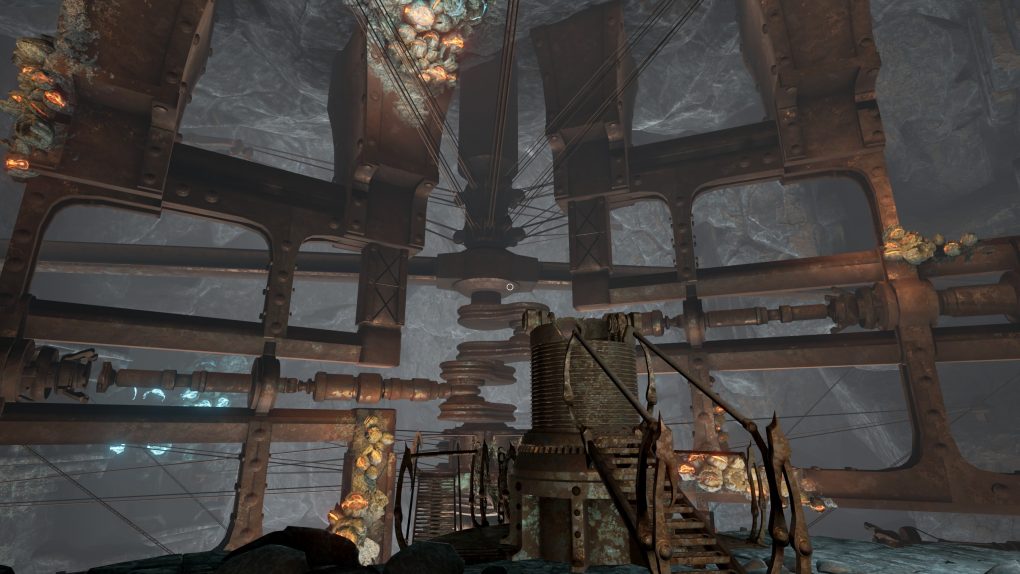
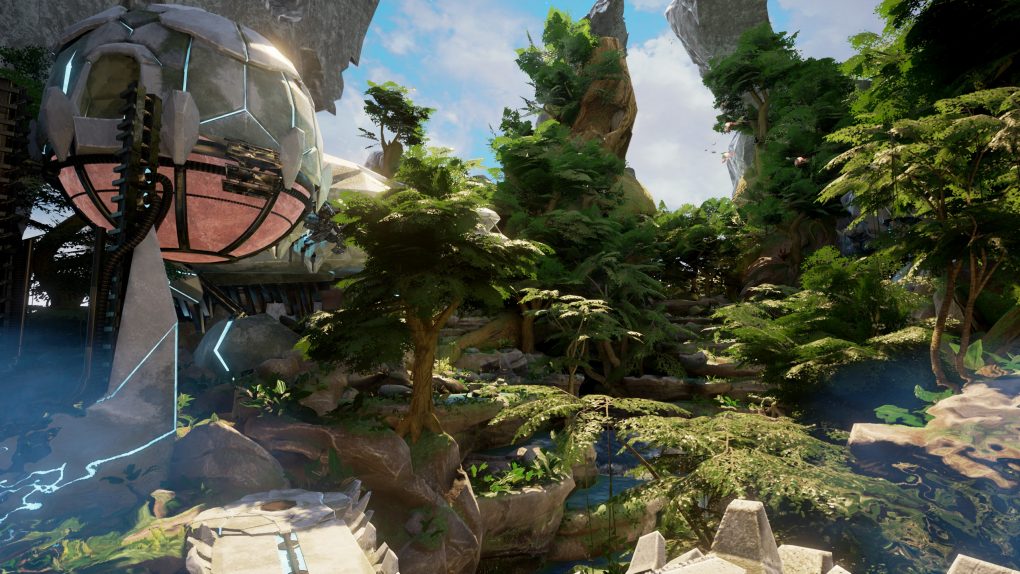
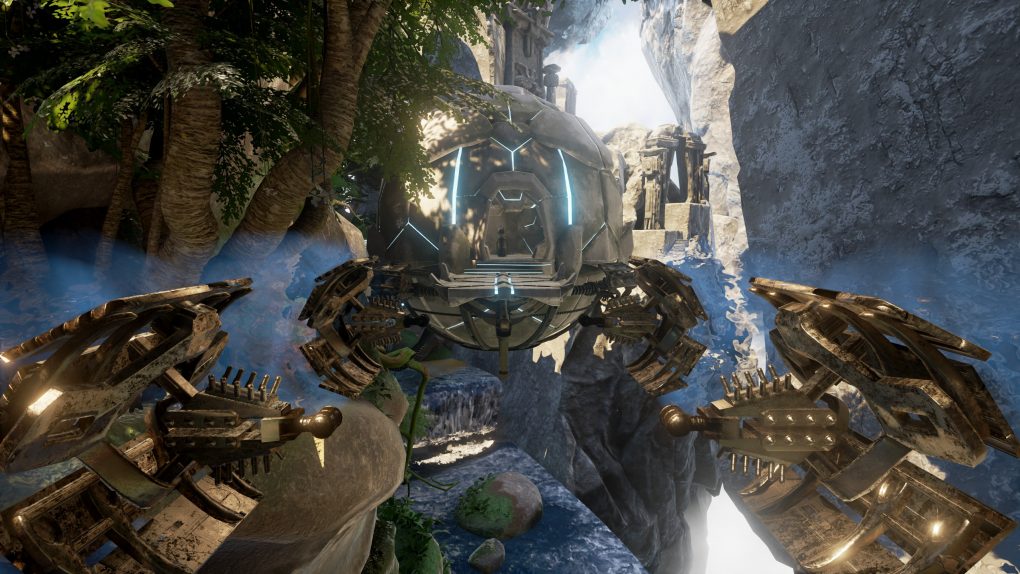
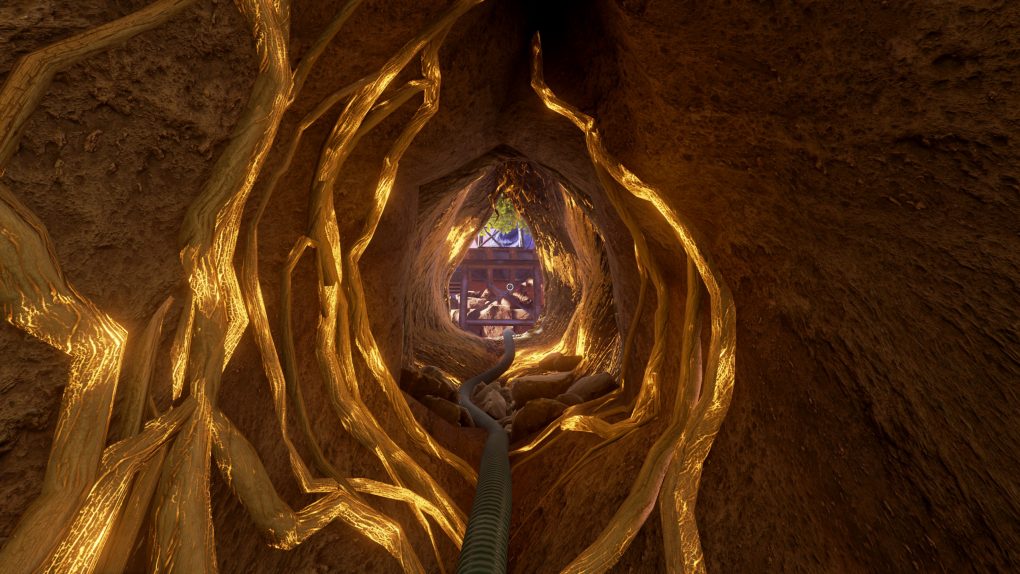
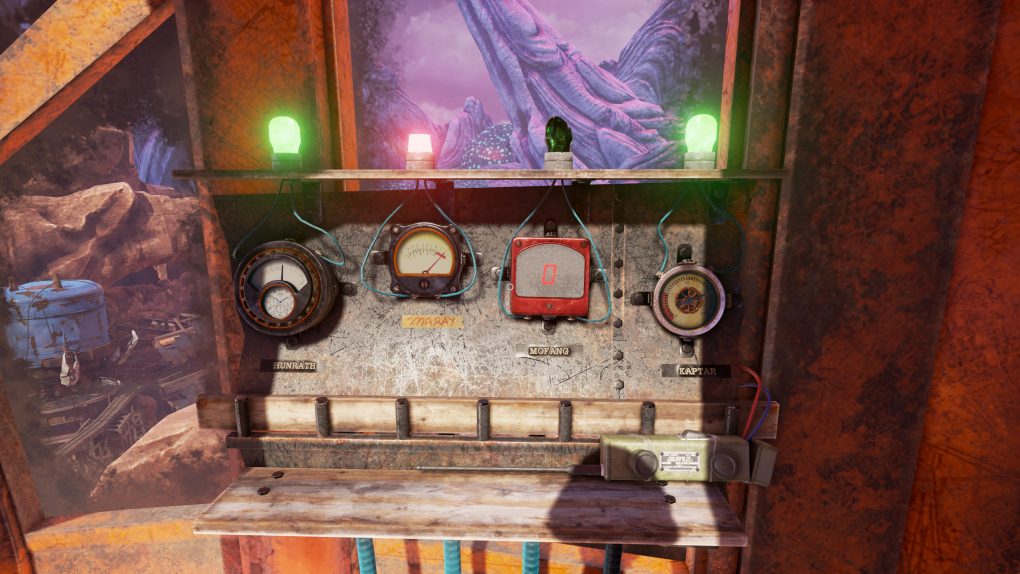
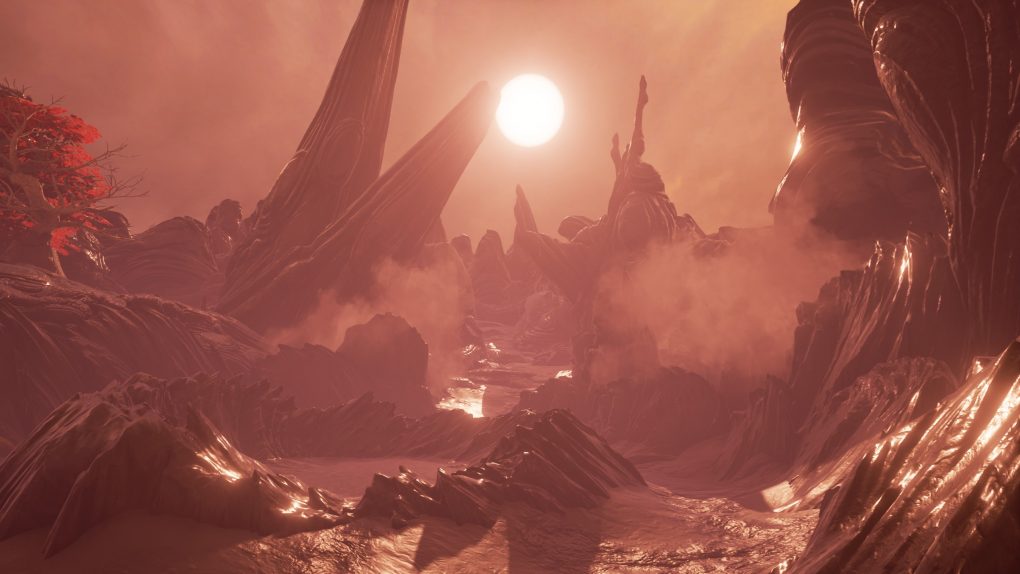






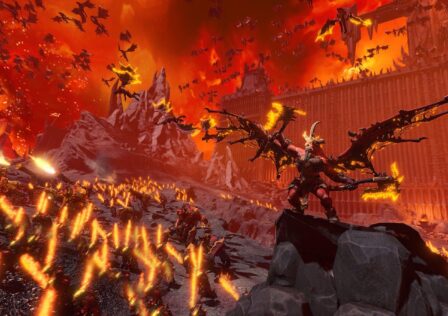
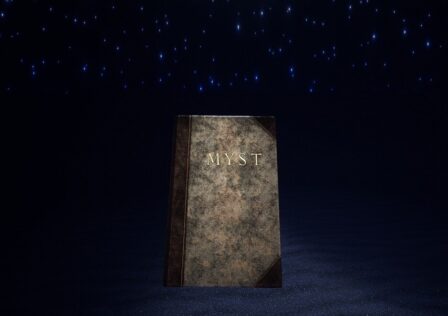
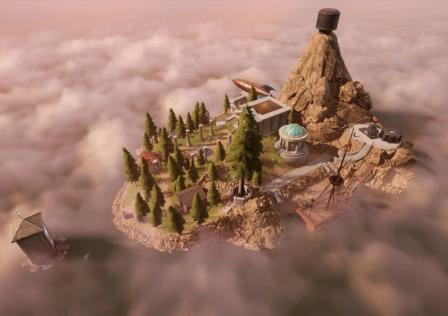
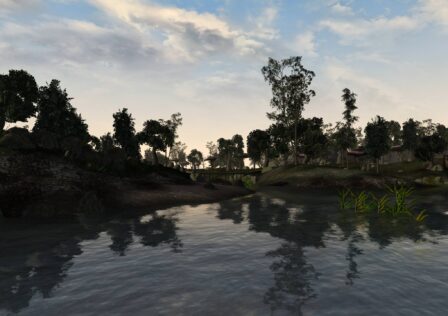
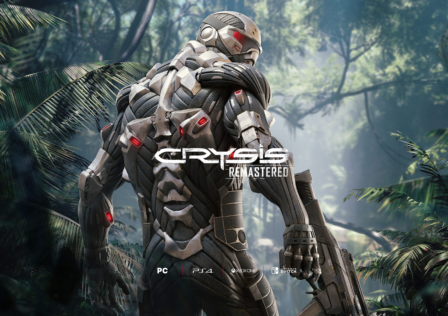
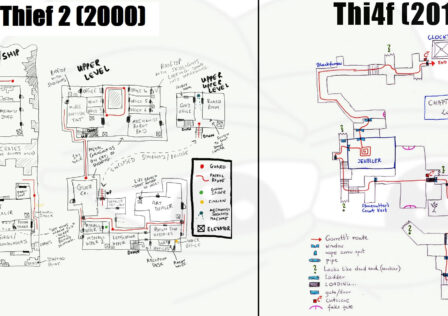
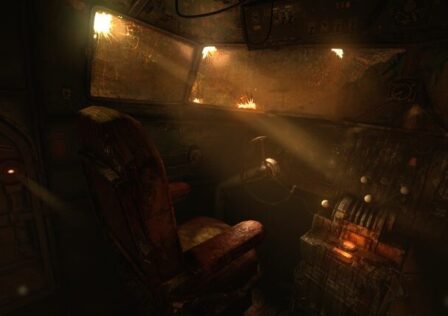

[…] game of all time. Obduction is Cyan’s latest game, released in August 2016. We reviewed it here. They also created one of the most important games ever, Myst, and Obduction is likewise a pioneer […]
[…] nice to see Robyn Miller return to deliver an outstanding soundtrack for their latest game, Obduction. There might be less similarities in the soundtrack than one would expect, but a few remain such as […]